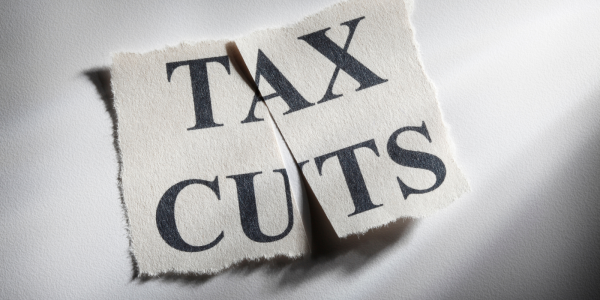LITRG concerned about lack of awareness of capital gains tax allowance cut
The Low Incomes Tax Reform Group (LITRG) is concerned that today’s drastic reduction in the annual amount of capital gains which would be free from capital gains tax (CGT) may go unnoticed by some unrepresented taxpayers, which could lead to higher rates of non-compliance.1 With HMRC figures suggesting that around 200,000 additional taxpayers will be required to file a Self Assessment tax return (and/or a 60-day property disposal return) as a result of the reduction,2 LITRG is calling for HMRC to do more to raise awareness of the reduction.

LITRG also urges the government and HMRC to consider the Office of Tax Simplification’s (OTS) 2020 recommendation to reform exemptions and administrative requirements alongside any reduction in the CGT Annual Exempt Amount (AEA).3
In the Autumn Statement 2022, the Chancellor announced that the CGT AEA would be reduced from £12,300 to £6,000 for the 2023/24 tax year, instantly reversing 30 years of inflationary increases to the figure.4 The allowance is also scheduled to be reduced further to £3,000 from 2024/25 onwards.
The CGT AEA provides taxpayers with some protection from burdensome compliance obligations when the amount of tax at stake is relatively small. The reductions to the CGT AEA will reduce that protection.
As some of the taxpayers with new compliance obligations may be unable to afford to pay for professional advice, LITRG is concerned about increased non-compliance.
Although the £6,000 CGT AEA may seem generous in the context of unrepresented and/or lower-income taxpayers, there are some scenarios in which such taxpayers may become liable to pay CGT. One example is when a chargeable gain arises when selling a property which has not been a taxpayer’s only or main residence throughout the entire period of ownership.5
Given the historic upward movement in house prices, it is easy to see how a sizeable gain can arise. In such situations, a reduction in the AEA will also increase the number of taxpayers needing to file a CGT property disposal report within 60 days – an obligation which, in LITRG’s experience, is not widely appreciated.6
Tom Henderson, LITRG Technical Officer, said:
“We were disappointed that the government did not first publish a review of the purpose of the CGT AEA before reducing it.7 It is also unfortunate that the government has implemented the reduction in isolation, ignoring the OTS’s recommendation to reform certain exemptions and administrative requirements to help ease the impact of such a reduction.
“A general lack of awareness of the reduction might leave unrepresented taxpayers exposed to penalties and interest arising from inadvertent non-compliance. The position is made worse by the fact that capital gains tax policy development in recent years – from the April 2020 changes to main residence relief to HMRC’s thinking on cryptoassets – has relied in part on previously higher levels of the AEA.8
“We urge the government to do more to mitigate the impact on unrepresented taxpayers on the reduction of the AEA. At the very least, the low awareness must be addressed. But we also urge the government to consider the OTS's recommendations to ease the impact of the changes when further considering CGT policy.”
Notes for editors
-
See paragraph 5.21, Autumn Statement 2022.
In addition to the reduction in the CGT AEA, the dividend allowance, currently £2,000, is similarly reduced from today: to £1,000 for 2023/24 and to £500 from 2024/25. This may also mean that those with dividend income above lower thresholds will be required to file a Self Assessment tax return, if HMRC cannot collect the tax liability any other way.
See our guidance for a basic introduction to CGT.
- See paragraph 4.15, OTS Capital Gains Tax Review: Simplifying by design (November 2020). A reduction to £6,000 was estimated to affect 139,000 non-SA taxpayers for 2021/22. A reduction to £2,500 was estimated to affect 240,000 non-SA taxpayers. A reduction to £3,000 is therefore likely to affect somewhere between the two figures.
Capital disposals for which a 60-day report is not required can also be reported using a real time service, potentially avoiding the need for a Self Assessment tax return.
- Recommendation 6, page 12, OTS Capital Gains Tax Review: Simplifying by design (November 2020).
- The CGT AEA was last £6,000 in 1995/96, see HMRC’s Capital Gains Tax Manual.
- In this context, LITRG sometimes hears from members of the public who have become ‘accidental landlords’ – renting out a property which they have inherited, or when they have moved in with a partner or moved for work reasons – and who have not then appreciated the full range of tax implications resulting from this, such as capital gains tax on disposal.
- For further commentary on the awareness of this obligation, see Chapter 1 of the OTS’s Capital Gains Tax – second report: Simplifying practical, technical and administrative issues (May 2021).
- Recommendation 5, page 12, OTS Capital Gains Tax Review: Simplifying by design (November 2020) said that the government should consider reducing the level of the CGT AEA if its policy is that the AEA is intended mainly to operate as an administrative de minimis. It is not clear that the government has reviewed and confirmed this purpose.
- For example, see paragraph 2.10(c), Capital Gains Tax: Private Residence Relief: changes to the ancillary reliefs (July 2019). Also, see Chapter 8 of HMRC’s research Individuals holding cryptoassets: uptake and understanding (July 2022).
